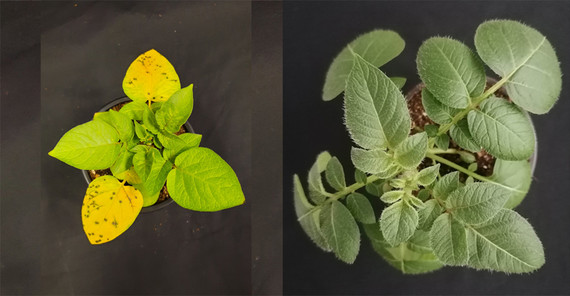With rising global population, the demand for food is growing, too. Changing environmental conditions lead to annual losses amounting to billions of euros per crop. To ensure food supply for people, crops must be made fit for the future in terms of yield and quality.
The potato is one of the most important crops worldwide. Viral infections and herbivore infestations, including Colorado potato beetle, can lead to yearly losses of up to 80 percent of crop yield. Plants attacked by these biotic stressors slow down their growth to preserve molecular resources, including production of signalling as well as defence compounds. Conversely, rapid plant growth is often accompanied by increased susceptibility to pests and pathogens, as growth is prioritised over defence. The team investigated this growth-defence trade-off using modelling approaches based on genome-scale metabolic models (GEM) of potatoes. Their findings have been published in the journal Proceedings of the National Academy of Sciences of the United States of America.
“The large-scale metabolic reconstruction potato-GEM captures the full known secondary metabolism in this major crop species”, reports Zoran Nikoloski, Professor for Bioinformatics at the University of Potsdam and group leader at the Max Planck Institute of Molecular Plant Physiology. The mathematical model enables extensive analysis of the interplay between growth and defence processes and is an excellent platform for further development and application. “Understanding the molecular mechanisms behind plant response to stress can enhance breeding strategies and help us design crop varieties with improved stress tolerance, yield and quality”, he summarizes.
Link to Publication: Zrimec et al. 2025, Evaluating plant growth–defense trade-offs by modeling the interaction between primary and secondary metabolism, PNAS, https://doi.org/10.1073/pnas.2502160122
Image: The potato is a major crop species, here a plant with (left) and without (right) virus infection. Photo: Sara Fišer, NIB, Ljubljana (CC BY-NC-SA)
Contact:
Prof. Dr. Zoran Nikoloski, Institute of Biochemistry and Biology
Tel.: +49 331 977 6305
E-Mail: zoran.nikoloskiuuni-potsdampde
Media Information 08-08-2025 / Nr. 072

